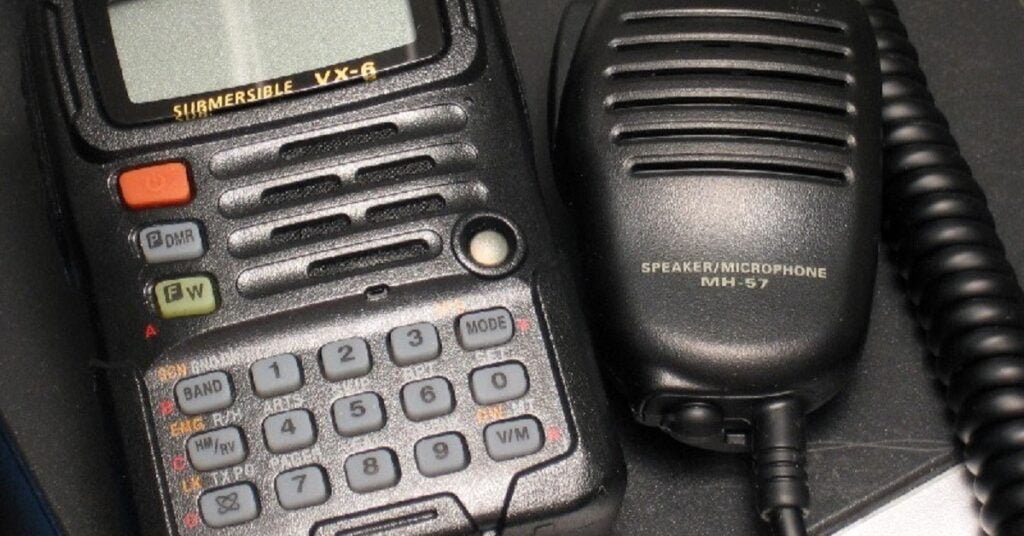Table of Contents
ToggleThe Problem with Your Walkie Talkie’s Keypad: Troubleshooting Tips
So there you are, prepared for an adventure and to voice walkie-talkies down the gravel road — obvious choice of path through rugged terrain or guiding teams around events. Then you find the issue, your walkie talkies handset keypad stops working. Now if you have a keypad which would not respond to anything.. this could really make trouble for wireless communication.. This ham radio review will focus on some reasons why your walkie-talkie may not be working the keypad, and more importantly how to fix it.
The Walkie Talkie Keypad: More Than Just Buttons
Keypad walkie talkies brought the high-tech era of communication. Apart from basic models with a channel knob, these fancy gadgets allow you to adjust frequencies yourself and toggle other functions like scanning. Although, keypad malfunctions showing up as a problem can be the same as when you are stuck in traffic and going nowhere. There you are, pounding on worthless buttons and your walkie-talkie becomes a worn-out paperweight.
In this post, we are going to discuss the possible causes of why your keypad stops working, maybe a software problem or hardware and help you with a solution to get back in function. Cos, you don’t wish to get stranded with a dead gadget at the moment when reliable communication is what matters most.
Common Causes of The Problem of Keypad
Meanwhile, there are several reasons why your walkie-talkie keypad will no longer work. Either there are problems with the software (the so-called firmware) or it is a hardware problem. We are going to look at how you can address each possible cause one by one.
Firmware Issues: When the Software Is to Blame

1. Corrupted Firmware
In this context, the brain of your walkie-talkie is its firmware. It tells the device what to do and how to do it. Sometimes though, the firmware may become corrupted during an upgrade or power outage. When that occurs, your two ways may respond oddly such as keypad failure.
Solution: Corner cases, certainly and flashing or updating the firmware can correct this. Download the newest firmware from the producers internet site and set it up as instructed by them. Even a simple update could breathe new life into your walkie-talkie and bring it back to how you felt when you first banged the box.
2. Software Bugs
After all, not even the best tools are without fault. There may be a software bug if some buttons on your walkie-talkie stop working or even the entire keyboard is frozen. Like your walkie talkies took a nap at just the wrong time.
Solution: Look for patches or updates available from a manufacturer. Regular updates don’t just correct existing issues, they also prevent new ones from forming. Updating and patching your walkie-talkies used to be like a regular tune-up.
3. Configuration Errors
Sometimes it is as easy as a normal setup mistake. You might have locked the keypad accidentally, or a simple setting changed stopping it from working. That goes for the best of us.
Hack: In most cases, a factory reset can correct setup issues. This will reset the walkie-talkie and also unlock your keypad. Once reset, change all the settings that might matter to you at this time. As if you were refreshing the walkie-talkies life.
Hardware Issues: When It’s Time to Get Hands-On

If updating the firmware doesn’t help resolving the keypad issue, it may be time for checking the hardware. And finding hardware issues is a bit confusing. But let’s not panic. We will try to find out anyway. And surely solve the problem.
1. Physical Damage
Has your walkie-talkie been dropped recently? Could your ham radio have been exposed to rain or left out in a downpour? Physical damage from collisions or dampness may cause havoc on the keypad. Stuck or damaged keys might prevent you from using your walkie-talkie effectively.
Solution: Give your walkie-talkie a thorough examination. Check for any evident damage or jammed keys. If you notice dirt or grime, thoroughly clean the keypad. If keys are physically damaged, you may need to replace the affected components. Time to think about taking care of your reliable handheld.
2. Connection Problems
The keypad of a ham radio is connected by cable connections or some sort of connectors to the responsive circuit board. If such connections become loose or break, the keypad will not function, no matter how hard you press the buttons.
Solution: If you’re handy, you can check for loose connections on your walkie-talkie by opening it up. To restore operation, carefully tighten any loose wires or connections. If this appears to be a difficult task, do not hesitate to consult a specialist. Better safe than sorry!
3. Faulty Keypad Matrix
The Keypad Matrix identifies the keys that we push. When it is smashed, your walkie-talkie will not recognize any keystrokes no matter how much try.
Solution: If this is an issue, the replacement of the keypad matrix might be necessary. Even if that sounds complicated, it’s a fairly common repair with new parts readily available online. Just make sure to pay close attention and follow them, or seek help from the professionals.
4. Electrical Issues
Some circumstances in which it may not be the keypad but components on the circuit board. If these chips are not energized properly because of short circuits or broken traces then there will be no power going to the keypad.
Resolution: If You are a novice in electronic electronics, it will be better to refer to a technician from the specialist domain that has practice on top of maintenance. They will replace what is needed to fix the issue and return your walkie talkie back to working status.
Diagnosing the Problem: Step-by-Step Troubleshooting
Anyway, how do you know exactly what is wrong with your best walkie-talkie keypad? This is a basic walk through diagnostic procedure for you to follow.
Updating firmware saves you constant resets. This is the most simple solution that you can implement to fix this issue without any problem.
Typically through visual inspection- look closely at the keyboard to ensure no physical damage or debris is obstructing its ability to work. If it is something visible, you may be able to just clean or repair the part.
Internal Inspection- if you are okay with this then open your handheld radio and inspect for loose connections between keypad and circuit board. This keypad attempts damage and fixes the wires that are loose in their places.
When in a fix, ask the experts- finally, if you have tried everything but still do not get your keypad functioning right, there is always an option to seek professional help. Sometimes it happens that the issue goes out of your understanding. In that case contact with some ham radio repair specialists. They can figure out the problem and resolve it.
Regular And Proper Maintenance Matters

With consistent cleaning and lack of abuse your walkie-talkie will keep you communicating whenever needed. While these devices are built for tough use and abuse, some minor maintenance can go a long way towards preventing issues such as keypad failures. Walkie Talkies in good condition : How?
Clean the keypad in time-to-time: Dirt, grit and dust accumulate over some period of time making your keys less responsive. Remember to clean the keypad on a regular basis using just gentle brush and cloth, especially after outdoor use.
Keep Away From Water: Although a few walkie-talkies are water resistant, they should be dry as long as viable. If your device gets wet—let it dry out before using.
Breakable: Walkie-talkies are not built to be dropped or left in high temperatures. This will cause your Ham radio in internal parts such as keypad damage.
A little bit of love for your walkie-talkie can be a lot more than necessary to make them last longer.
When It’s Time for an Upgrade
If your device is a bit old or it got pretty damaged, then maybe it’s time for you to replace them. It does not recall everything which transpires in the desert, only that walkie talkies of today use enhanced keypads and Sturdiness but much more functionality than ever.
Are you not sure which model to pick, read a complete ham radio review for best info. Great research can help you select a walkie-talkie with your reliable keypad and never ever have to deal with slow keys once again.
Chinese brands like BaoFeng are our pick for anyone looking to get all of the features and keypad capability without burning a hole in their wallet. As I have tried the dual band walkie-talkies too, and my answer to you is Baofeng UV-5R. Incidentally, if you have a problem with the keypad or are a newcomer in the world of ham radios at all and need something cheap I would suggest another BaoFeng model: BF888S. It’s super inexpensive, UHF-band compatible and is programmable. Not everyone can afford to spend money when they are starting. So why waste the pennies if you have it.
Exploring Advanced Options: Keypad Locks and Customizations
In some cases, Walkie-Talkies come with advanced features such as keypad locking and additional customization options. While this functionality might enhance your user experience, it can also lead to some serious challenges if used incorrectly. So I want to dive deeper into how they work and why you may be experiencing a headache.
Keypad Locks
Maximum walkie-talkies at modern times come with a very important factory setting is lock keypad. With these settings the keypad of the walkie-talkie device is set to lock automatically after a period of time if not using the keypad. It prevents accidental and unwanted key pressing. Some of us might be unaware about this and mistakenly think that the keypad is broken. Thus it is just locked and you have to find out how to unlock it and if you don’t want auto keypad locking, you have to find out in settings and change it as you want.
Solution: Different handheld models have different methods to unlock the keypad. You can check the user manual to find out how to unlock the keypad if it is locked. It’s generally only a series of button pushes, and once unlocked, your keypad should work as intended.
Customizable Key Functions
Personalization: Some advanced walkie-talkies allow you to personalize basic functions by programming different actions for buttons. This is a very useful tool, however it can be more problematic if you reassign keys and not realize.
Troubleshoot: Make sure your key assignments are set up properly or reset it to their default options. While custom features are great, they need to be dialed in just right otherwise you might end up with some unintended output.
Final Thoughts: Keep the Conversation Going
It may feel like your walkie-talkie has lost its communication link when the keypad stops functioning. It just often requires a bit of troubleshooting. Whether it is firmware or hardware fault, a methodical procedure will help you to identify and troubleshoot the issue.
At TalkieTrail.com, we are here to help you with all your walkie-talkie problems so that you can stay connected no matter what! Be sure to visit our latest ham radio review for subtle options and things you must know to get the best out of your communication devices. With minimal efforts and small tips, you will come back to an era of smooth, speechless conversations. Because the fact is, those frequencies are open — talk to them!!!
Encountering other problems with your device? Visit our Fix Doctor area to read more on the ham radio. Check out our Analyst Hub zone to know more about ham radios and walkie talkies. The word team and definitely don’t feel free to reach out if you need help.


